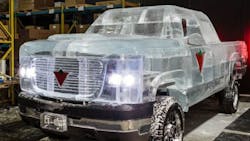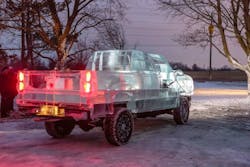The recent outdoor match-up between the Detroit Red Wings and the Toronto Maple Leafs was noteworthy not just because it hosted the largest attendance for a hockey game (105,491). Canadian TV viewers of the game also got to see the debut of a pickup truck whose body was made completely of ice.
Also in the news recently is a vehicle made almost entirely of Lego blocks. Its creators admit that the load-bearing parts are made of sturdier stuff. The roadster was created by a 20-year-old Romanian tinkerer named Raul Oaida who was bank-rolled partly by a group in Australia and partly through a Kickstarter campaign.
The Lego roadster has been driven at least once when it hit a top speed of 25 kph (about 15.5 mph). The group claims the top speed should be about 40 kph (about 25 mph) but they don't want to press their luck trying to get it going that fast.
About the Author
Leland Teschler
Lee Teschler served as Editor-in-Chief of Machine Design until 2014. He holds a B.S. Engineering from the University of Michigan; a B.S. Electrical Engineering from the University of Michigan; and an MBA from Cleveland State University. Prior to joining Penton, Lee worked as a Communications design engineer for the U.S. Government.




